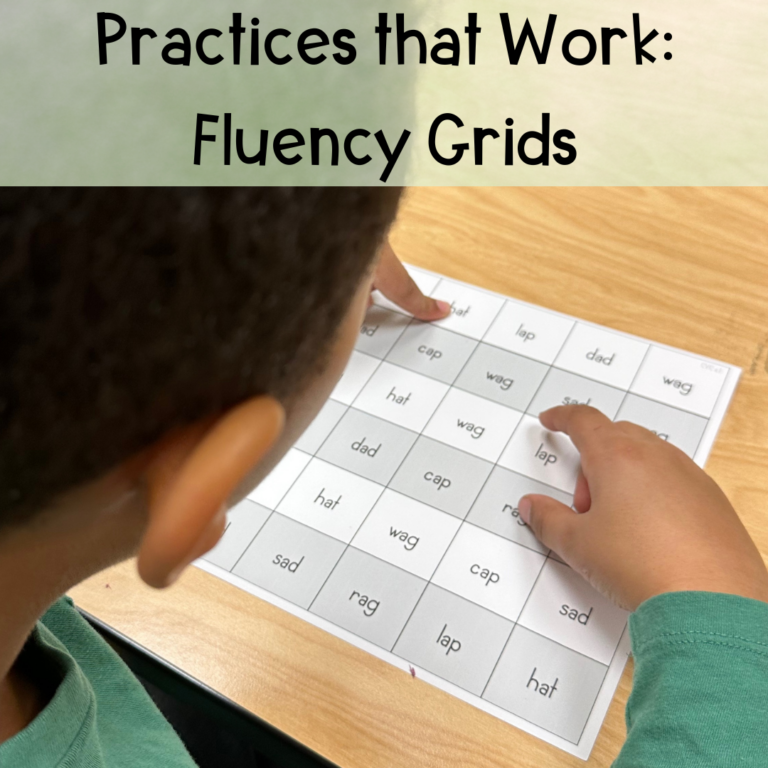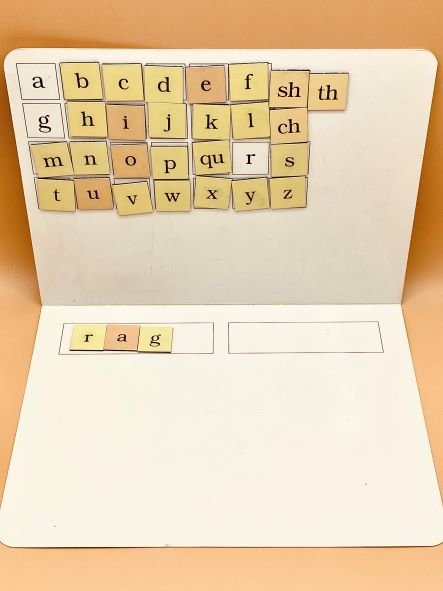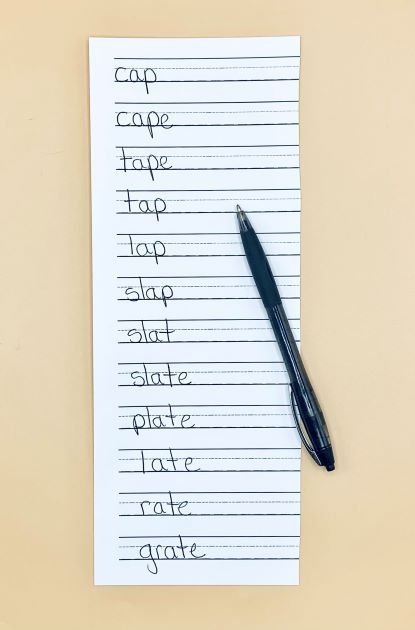
Share This:
I’ve talked a lot about word chains, but realized I’ve never dug deeply into why they are important and very explicitly explain the steps to take. So today, I’m diving deep into why and how, without extra fluff. (Look, I’m even keeping the intro short so this doesn’t become one of those recipe blogs that tells you the entire history of cheese before giving you the chimichanga recipe.)

A word chain is a series of words that each differ by one phoneme. Children are expected to spell a word. Then, each subsequent word changes by one phoneme (sound). Because they differ by sounds, it may be more than one letter that is changed. For example I may move from bat to chat: this is only one sound, but two letters. I typically include 10 words in my word chains. For example: bat, cat, can, man, men, ten, Ben, bet, wet, let. You can change the sound in any position, dependening on your students.
Word chaining strengthens both phonics and phonemic awareness skills. Since children are changing one sound, they must constantly decide which sound is being changed in the word (this is a phoneme manipulation task). Additionally, with each new word, students must decide which grapheme is represented by that new phoneme. Phonics and phonemic awareness are working together to move the child forward.
You can word chain using whatever medium you want—paper, dry erase boards, magnetic letters. I typically use dry-erase boards because it is easy to change just the targeted sound. Magnetic letters are also helpful for a different engagement technique.
One absoultely essential tip: before you begin word chaining, you must have your list of words ready. There is nothing worse than realizing you don’t know which word the kids should make next! I actually created a product with 59 word chains organized by phonics skills (CVC, digraphs, blends, magic e, etc.). It’s become the most popular thing I’ve ever sold, and I think that it is a testament to how easy the routine is and how powerful the results are.

Another important tip is that you don’t want to tell children too much. Make them do the hard work of figuring out where the sound is. If you tell them “Change the last sound in chat to make it say Chad,” then you are doing some of the phonological awareness work for them. Only give that additional help if children are not successful on their own.
Word chaining steps:
1. Say the word, have students repeat the word. (Teacher says: Your word is chat. Say chat.)
2. Students tap the word. (Teacher says: Let’s tap it: /ch/-/a/-/t/)
3. Students spell the word. (Teacher says: Spell the word, making sure you say the sounds as you spell.)
4. Ask students to say the sounds and blend the word.
5. Tell students how you want them to change the word. DO NOT tell them which sound they are changing. (Teacher says: Change one sound in chat to make it say chap.)
6. Ask students to say the sounds and blend the word after each change. (This is so they are reading every word as a whole after they write it.)
Word chaining is simple, but powerful. As I close, I want to give two reminders. 1. Make sure you have your word chaining list prepared beforehand. 2. Don’t tell them too much information. Make sure children are doing the hard work of figuring out which sound to change. I’d love to hear in the comments if you use this routine in your classroom!
If you want the pre-made lists, snag them here!

Savannah Campbell is a K-5 reading specialist. She has taught her entire 12-year teaching career at the school she went to as a child. She holds two master’s degrees in education from the College of William and Mary. Savannah is both Orton-Gillingham and LETRS trained. Her greatest hope in life is to allow all children to live the life they want by helping them to become literate individuals.

Savannah Campbell is a K-5 reading specialist. She has taught her entire 12-year teaching career at the school she went to as a child. She holds two master’s degrees in education from the College of William and Mary. Savannah is both Orton-Gillingham and LETRS trained. Her greatest hope in life is to allow all children to live the life they want by helping them to become literate individuals.
Feeling overwhelmed with all the terminology out there? Want to know the key terms all teachers need to teach phonics? In this FREE Rules of English cheat sheet, you get a 5 page pdf that takes you through the most important terms for understanding English—you’ll learn about digraphs, blends, syllable types, syllable divisions, and move. Grab today and take the stress out of your phonics prep!
